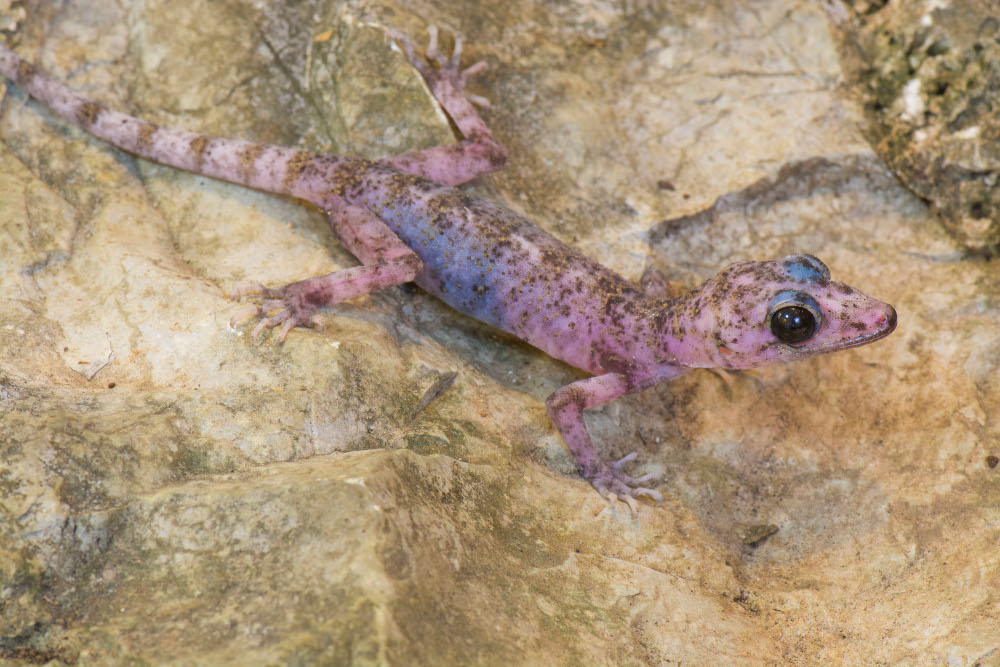In 2016, a team of researchers have been invited by a limestone mining site to study wildlife in Myanmar. Little did they know, their 19-day trip was worth it until the very last seconds.
Lee Grismer is a biologist at La Sierra University when Shwe Taung, one of Myanmar’s largest industrial companies invited him and other team of international experts, to conduct research on one of their limestone mining sites and assess the local wildlife.

“They said, ‘you can work here from morning until three o’clock, but then you have to leave because we are going to blow it up,” Grismer has told Revelator, an online website that has been initiated by the Center for Biological Diversity. “So we start surveying and while we’re working they’re drilling these big old holes all around us and stuffing tubes fill of C4 down the holes with primer core.”
The researchers did not find anything on their first try, because most of the animals were more active at night. They turned to leave, but stopped on their tracks after hearing a series of massive explosions.

Grismer and his team returned to the site on that same night and found craters. What’s more fascinating than the big craters? Different brand-new species of geckos!
Grismer’s team collaborated with Flora and Fauna International to distinguish 28 new gecko species from one another and name them. 12 more species are currently waiting to be published, too.
The geckos they found are vibrant in color, unique and have adapted well on very narrow habitats. Though a beauty at its finest, researchers warn most of those they found are at risk from nearby extinction.
“The limestone in Myanmar is so rich in the components that are necessary to make cement that a lot of foreign and national companies are expanding their mining operations,” Grismer said. “Myanmar has one of the most extensive limestone ecosystems in the world, and it is the least protected of any country in the world, with maybe 1 percent of it being considered sensitive.”
Habitat loss and the continuous mining operations are putting these creatures at risk.

“We are collecting in one area and they’re blowing up the place right next to us,” Grismer said.
“I lose sleep over it at night wondering what’s going to happen to these species,” he added. “When I drive to school every morning and I see them putting in these new cement freeways, I’m thinking, how many geckos they killed, you know?”
Though the path for these incredible creatures are unclear at the moment, Grismer believes there is a silver lining to their work.
“We’re seeing good results and we’re seeing protective measures being levied based on our work,” he added. “ It’s encouraging us to keep going and push harder and deeper and stronger.”
Related stories:
– Lizard returns from exile, now free to walk in the park
– Facing extinction
– New species! Northern Sierra Madre Forest Monitor





